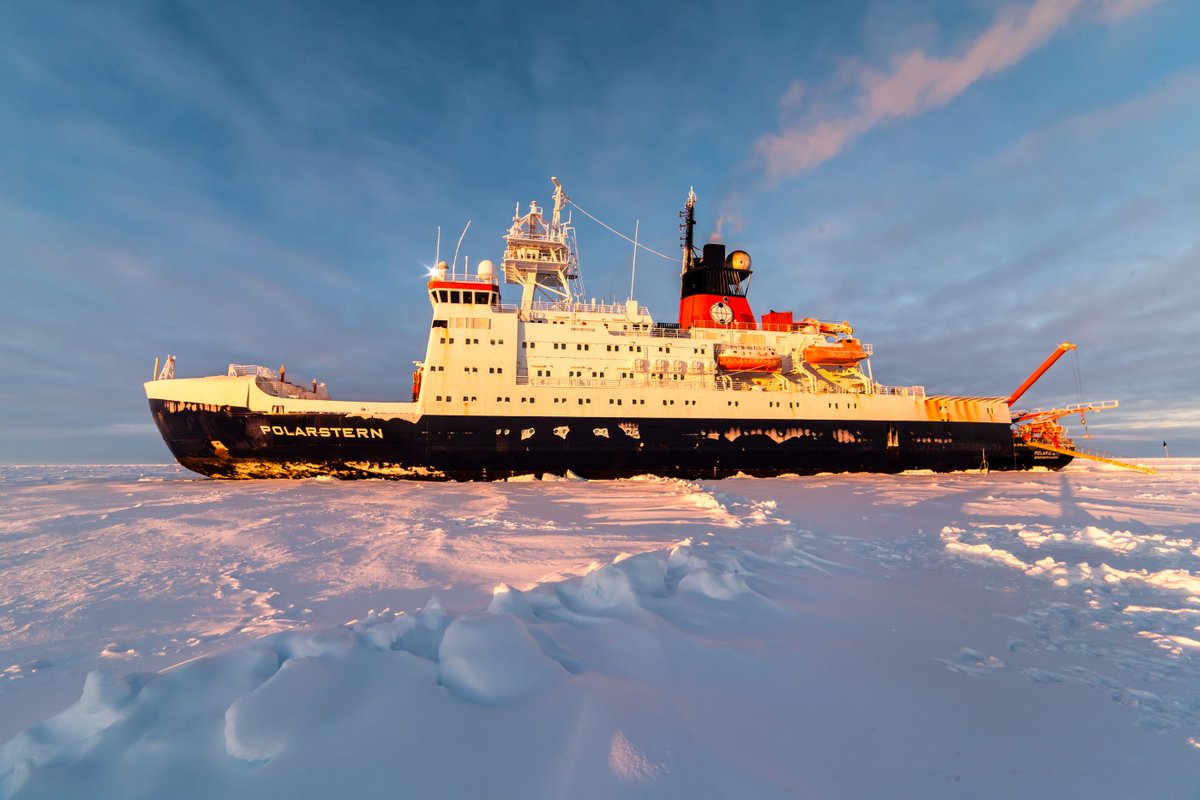German Icebreaker "Polarstern" Returns from Arctic

German research icebreaker Polarstern, operated by the Alfred Wegener Institute for Polar and Marine Research. Photo: Alfred Wegener Institute, Twitter
The German research icebreaker “Polarstern” returned from its 26th Arctic expedition and is undergoing routine maintenance in its homeport of Bremerhaven. During its 21,000 km journey the vessel conducted research on the rate of ice melt around the north pole. Using a four-meter-long probe called “EM Bird” aerial measurements on ice thickness were conducted along a line of over 2,500 km. The researchers concluded that very little multi-year ice remains around the North Pole and average ice thickness only reached 90 centimeters.
The 30-year old flagship of the Alfred-Wegener-Institute for Polar and Marine Research had traveled to the North Pole twice before in 1991 and 2001. In contrast to the previous journeys the ship encountered very little multi-year ice and ice thickness decreased markedly. Only throughout the Canadian archipelago and near the Severnaya Zemlya island group in northern Siberia did the ship encounter significant amounts of older ice between 2 and 5 meters thick. The scientists also noted that formation of sea ice in September progressed slower than during previous years.
Researchers on the Polarstern also conducted research on the distribution of sunlight under the ice sheet using a remotely operated vehicle at depth of up to 100 meters. Their measurements showed that multi-year ice is more impervious to light than single-year ice. As the composition of Arctic ice changes in favor of single-year ice, the amount of light absorbed by the Arctic Ocean will increase. This may result in a warming of water near the surface. According to Prof. Ursula Schauer, director of the expedition, water temperatures at a depth of 10 meters were three degrees centigrade, too warm for new ice to form.The Polarstern is undergoing routine maintenance before departing on a voyage to Antarctica on October 28th.
In the Pacific Ocean, meanwhile, the United States Coast Guard (USGS) Cutter Healy has embarked on its third scientific mission of the 2011 season. The icebreaker will conduct bathymetric and seismic surveys across more than 4,600 miles of Arctic seafloor. These surveys are part of the USGS’s effort to map out the ocean floor north of Alaska. The data could potentially be used to file for the extension of the continental shelf once the U.S. ratifies the United Nations Convention on the Law of the Sea.
The medium-size Healy is currently the only operational icebreaker suitable to sail in the high latitudes. On September 23rd, Alaskan Senator Mark Begich authored a bill which would revoke the decision to decommission the 35-year-old heavy ice-breaker Polar Star, the only asset in the Coast Guard’s inventory suitable to sail through heavy ice conditions. Several non-Arctic states, such as China and South Korea, are expanding their Arctic resources and Russia announced plans to commission a number of new nuclear-powered icebreakers. The accelerated melting of Arctic sea ice is opening up resource development and shipping lanes and the ability to project national sovereignty in the High North may become increasingly important.
The National Snow and Ice Data Center announced that September 2011 saw the second lowest average ice extent since satelite observations started in 1979. The September extent was 4.61 million square kilometers, about 310,000 square kilometers above the record average low of September 2007. According to the NSIDC the 2011 melt season did not see “a “perfect” storm of atmospheric and ocean conditions” that accelerate ice loss. While wind and ocean circulation patterns in 2011 were similar to four years ago, they were less strong and persistent.
The NSIDC states that despite the lack of “extreme weather conditions seen in 2007” his year’s melt season saw the continuous decline of multi-year ice, which helps to explain why ice extent did not recover. While first- and second-year ice composed 80 percent of the ice cover in March 2011, that figure was only 55 percent from 1980-2000. “Continued loss of the oldest, thickest ice has prevented any significant recovery of the summer minimum extent. In essence [even areas that] once were a refuge for older ice [have] become a graveyard.”